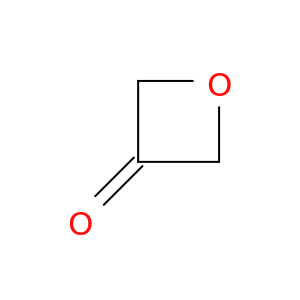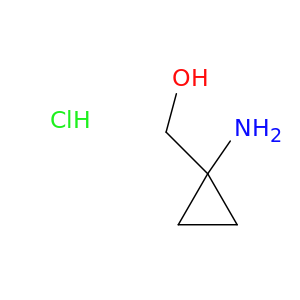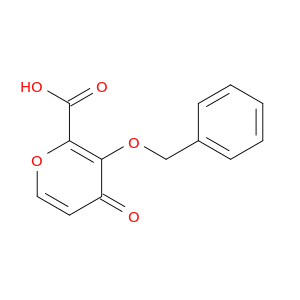200,000+ products from a single source!
sales@angenechem.com
Home > Quinoline > 521313-35-9

521313-35-9 | 2-heptyl-3,4-Quinolinediol
CAS No: 521313-35-9 Catalog No: AG00DJHY MDL No:
Product Description
Catalog Number:
AG00DJHY
Chemical Name:
2-heptyl-3,4-Quinolinediol
CAS Number:
521313-35-9
IUPAC Name:
2-heptyl-3-hydroxy-1H-quinolin-4-one
InChI:
InChI=1S/C16H21NO2/c1-2-3-4-5-6-11-14-16(19)15(18)12-9-7-8-10-13(12)17-14/h7-10,19H,2-6,11H2,1H3,(H,17,18)
InChI Key:
CEIUIHOQDSVZJQ-UHFFFAOYSA-N
Properties
Complexity:
349
Compound Is Canonicalized:
Yes
Covalently-Bonded Unit Count:
1
Defined Atom Stereocenter Count:
0
Defined Bond Stereocenter Count:
0
Exact Mass:
259.157g/mol
Formal Charge:
0
Heavy Atom Count:
19
Hydrogen Bond Acceptor Count:
3
Hydrogen Bond Donor Count:
2
Isotope Atom Count:
0
Molecular Weight:
259.349g/mol
Monoisotopic Mass:
259.157g/mol
Rotatable Bond Count:
6
Topological Polar Surface Area:
49.3A^2
Undefined Atom Stereocenter Count:
0
Undefined Bond Stereocenter Count:
0
XLogP3:
4.7
Literature
| Title | Journal |
|---|---|
| Structure-function analysis of the C-3 position in analogues of microbial behavioural modulators HHQ and PQS. | Organic & biomolecular chemistry 20121128 |
| Analysis of Pseudomonas quinolone signal and other bacterial signalling molecules using capillaries coated with highly charged polyelectrolyte monolayers and boron doped diamond electrode. | Journal of chromatography. A 20120817 |
| Pseudomonas aeruginosa inhibits the growth of Cryptococcus species. | Mycopathologia 20120601 |
| Microwave-assisted preparation of the quorum-sensing molecule 2-heptyl-3-hydroxy-4(1H)-quinolone and structurally related analogs. | Nature protocols 20120524 |
| 7-fluoroindole as an antivirulence compound against Pseudomonas aeruginosa. | FEMS microbiology letters 20120401 |
| Characterization of wetland quorum quenching Pseudomonas aeruginosa strain 2SW8 and its 2-heptyl-3-hydroxy-4-quinolone production. | The new microbiologica 20120101 |
| Quorum sensing modulates colony morphology through alkyl quinolones in Pseudomonas aeruginosa. | BMC microbiology 20120101 |
| A bilayer-couple model of bacterial outer membrane vesicle biogenesis. | mBio 20120101 |
| Honey's Ability to Counter Bacterial Infections Arises from Both Bactericidal Compounds and QS Inhibition. | Frontiers in microbiology 20120101 |
| Social Behaviours under Anaerobic Conditions in Pseudomonas aeruginosa. | International journal of microbiology 20120101 |
| Inhibition of quorum sensing-controlled virulence factor production in Pseudomonas aeruginosa PAO1 by Ayurveda spice clove (Syzygium aromaticum) bud extract. | Sensors (Basel, Switzerland) 20120101 |
| Detection of the Pseudomonas Quinolone Signal (PQS) by cyclic voltammetry and amperometry using a boron doped diamond electrode. | Chemical communications (Cambridge, England) 20111007 |
| The Pseudomonas aeruginosa quinolone quorum sensing signal alters the multicellular behaviour of Pseudomonas putida KT2440. | Research in microbiology 20111001 |
| The Pseudomonas quinolone signal (PQS), and its precursor HHQ, modulate interspecies and interkingdom behaviour. | FEMS microbiology ecology 20110801 |
| A quorum sensing regulated small volatile molecule reduces acute virulence and promotes chronic infection phenotypes. | PLoS pathogens 20110801 |
| Growth phase-differential quorum sensing regulation of anthranilate metabolism in Pseudomonas aeruginosa. | Molecules and cells 20110731 |
| C-type natriuretic peptide modulates quorum sensing molecule and toxin production in Pseudomonas aeruginosa. | Microbiology (Reading, England) 20110701 |
| 3-indolylacetonitrile decreases Escherichia coli O157:H7 biofilm formation and Pseudomonas aeruginosa virulence. | Environmental microbiology 20110101 |
| Detection of 2-alkyl-4-quinolones using biosensors. | Methods in molecular biology (Clifton, N.J.) 20110101 |
| Quantifying Pseudomonas aeruginosa quinolones and examining their interactions with lipids. | Methods in molecular biology (Clifton, N.J.) 20110101 |
| Simultaneous quantitative profiling of N-acyl-L-homoserine lactone and 2-alkyl-4(1H)-quinolone families of quorum-sensing signaling molecules using LC-MS/MS. | Analytical and bioanalytical chemistry 20110101 |
| Exploring the metabolic network of the epidemic pathogen Burkholderia cenocepacia J2315 via genome-scale reconstruction. | BMC systems biology 20110101 |
| MexEF-OprN efflux pump exports the Pseudomonas quinolone signal (PQS) precursor HHQ (4-hydroxy-2-heptylquinoline). | PloS one 20110101 |
| Phenotypic and genome-wide analysis of an antibiotic-resistant small colony variant (SCV) of Pseudomonas aeruginosa. | PloS one 20110101 |
| Secretion of Pseudomonas aeruginosa type III cytotoxins is dependent on pseudomonas quinolone signal concentration. | Microbial pathogenesis 20101001 |
| Global gene expression analysis on the target genes of PQS and HHQ in J774A.1 monocyte/macrophage cells. | Microbial pathogenesis 20101001 |
| Transcriptomic analysis reveals a global alkyl-quinolone-independent regulatory role for PqsE in facilitating the environmental adaptation of Pseudomonas aeruginosa to plant and animal hosts. | Environmental microbiology 20100601 |
| HHQ and PQS, two Pseudomonas aeruginosa quorum-sensing molecules, down-regulate the innate immune responses through the nuclear factor-kappaB pathway. | Immunology 20100401 |
| Bicyclic compounds repress membrane vesicle production and Pseudomonas quinolone signal synthesis in Pseudomonas aeruginosa. | FEMS microbiology letters 20100301 |
| Homeostatic interplay between bacterial cell-cell signaling and iron in virulence. | PLoS pathogens 20100301 |
| The effect of a cell-to-cell communication molecule, Pseudomonas quinolone signal (PQS), produced by P. aeruginosa on other bacterial species. | Microbes and environments 20100101 |
| Pseudomonas quinolone signal affects membrane vesicle production in not only gram-negative but also gram-positive bacteria. | Microbes and environments 20100101 |
| Dioxygenase-mediated quenching of quinolone-dependent quorum sensing in Pseudomonas aeruginosa. | Chemistry & biology 20091224 |
| Pyoverdine and PQS mediated subpopulation interactions involved in Pseudomonas aeruginosa biofilm formation. | Molecular microbiology 20091201 |
| Structure elucidation and preliminary assessment of hydrolase activity of PqsE, the Pseudomonas quinolone signal (PQS) response protein. | Biochemistry 20091103 |
| Structure of PqsD, a Pseudomonas quinolone signal biosynthetic enzyme, in complex with anthranilate. | Biochemistry 20090915 |
| Subinhibitory concentrations of the cationic antimicrobial peptide colistin induce the pseudomonas quinolone signal in Pseudomonas aeruginosa. | Microbiology (Reading, England) 20090901 |
| Pseudomonas aeruginosa extracellular products inhibit staphylococcal growth, and disrupt established biofilms produced by Staphylococcus epidermidis. | Microbiology (Reading, England) 20090701 |
| Connecting quorum sensing, c-di-GMP, pel polysaccharide, and biofilm formation in Pseudomonas aeruginosa through tyrosine phosphatase TpbA (PA3885). | PLoS pathogens 20090601 |
| Pseudomonas aeruginosa quorum-sensing signal molecules interfere with dendritic cell-induced T-cell proliferation. | FEMS immunology and medical microbiology 20090401 |
| Quorum sensing and environmental adaptation in Pseudomonas aeruginosa: a tale of regulatory networks and multifunctional signal molecules. | Current opinion in microbiology 20090401 |
| Long-distance delivery of bacterial virulence factors by Pseudomonas aeruginosa outer membrane vesicles. | PLoS pathogens 20090401 |
| Effects of osmotic stress on rhamnolipid synthesis and time-course production of cell-to-cell signal molecules by Pseudomonas aeruginosa. | The open microbiology journal 20090101 |
| Indole and 7-hydroxyindole diminish Pseudomonas aeruginosa virulence. | Microbial biotechnology 20090101 |
| The PA4204 gene encodes a periplasmic gluconolactonase (PpgL) which is important for fitness of Pseudomonas aeruginosa. | Microbiology (Reading, England) 20081001 |
| Quorum sensing by 2-alkyl-4-quinolones in Pseudomonas aeruginosa and other bacterial species. | Molecular bioSystems 20080901 |
| The pseudomonas quinolone signal (PQS) balances life and death in Pseudomonas aeruginosa populations. | PLoS pathogens 20080901 |
| Interaction of quorum signals with outer membrane lipids: insights into prokaryotic membrane vesicle formation. | Molecular microbiology 20080701 |
| PA2663 (PpyR) increases biofilm formation in Pseudomonas aeruginosa PAO1 through the psl operon and stimulates virulence and quorum-sensing phenotypes. | Applied microbiology and biotechnology 20080201 |
| Multiple roles of Pseudomonas aeruginosa TBCF10839 PilY1 in motility, transport and infection. | Molecular microbiology 20080201 |
| Multiple phenotypic alterations caused by a c-type cytochrome maturation ccmC gene mutation in Pseudomonas aeruginosa. | Microbiology (Reading, England) 20080101 |
| Fitness of isogenic colony morphology variants of Pseudomonas aeruginosa in murine airway infection. | PloS one 20080101 |
| Bench-to-bedside review: Quorum sensing and the role of cell-to-cell communication during invasive bacterial infection. | Critical care (London, England) 20080101 |
| A dual biosensor for 2-alkyl-4-quinolone quorum-sensing signal molecules. | Environmental microbiology 20071101 |
| Inhibitors of pathogen intercellular signals as selective anti-infective compounds. | PLoS pathogens 20070901 |
| Farnesol, a common sesquiterpene, inhibits PQS production in Pseudomonas aeruginosa. | Molecular microbiology 20070801 |
| Iron- and 4-hydroxy-2-alkylquinoline-containing periplasmic inclusion bodies of Pseudomonas aeruginosa: a chemical analysis. | Bioorganic chemistry 20070401 |
| Dynorphin activates quorum sensing quinolone signaling in Pseudomonas aeruginosa. | PLoS pathogens 20070301 |
| The Pseudomonas aeruginosa 4-quinolone signal molecules HHQ and PQS play multifunctional roles in quorum sensing and iron entrapment. | Chemistry & biology 20070101 |
| Biosensor-based assays for PQS, HHQ and related 2-alkyl-4-quinolone quorum sensing signal molecules. | Nature protocols 20070101 |
| MvfR, a key Pseudomonas aeruginosa pathogenicity LTTR-class regulatory protein, has dual ligands. | Molecular microbiology 20061201 |
| PtxR modulates the expression of QS-controlled virulence factors in the Pseudomonas aeruginosa strain PAO1. | Molecular microbiology 20060801 |
| The Pseudomonas aeruginosa quinolone signal (PQS) has an iron-chelating activity. | Environmental microbiology 20060801 |
| Functional genetic analysis reveals a 2-Alkyl-4-quinolone signaling system in the human pathogen Burkholderia pseudomallei and related bacteria. | Chemistry & biology 20060701 |
| 4-quinolone signalling in Pseudomonas aeruginosa: old molecules, new perspectives. | International journal of medical microbiology : IJMM 20060401 |
| Immune modulation by Pseudomonas aeruginosa quorum-sensing signal molecules. | International journal of medical microbiology : IJMM 20060401 |
| Bacterial small-molecule signaling pathways. | Science (New York, N.Y.) 20060224 |
| Microbiology: bacterial speech bubbles. | Nature 20050915 |
| Membrane vesicles traffic signals and facilitate group activities in a prokaryote. | Nature 20050915 |
| Modulation of quorum sensing in Pseudomonas aeruginosa through alteration of membrane properties. | Microbiology (Reading, England) 20050801 |
| The MexGHI-OpmD multidrug efflux pump controls growth, antibiotic susceptibility and virulence in Pseudomonas aeruginosa via 4-quinolone-dependent cell-to-cell communication. | Microbiology (Reading, England) 20050401 |
| Electrospray/mass spectrometric identification and analysis of 4-hydroxy-2-alkylquinolines (HAQs) produced by Pseudomonas aeruginosa. | Journal of the American Society for Mass Spectrometry 20040601 |
| Dueling quorum sensing systems in Pseudomonas aeruginosa control the production of the Pseudomonas quinolone signal (PQS). | FEMS microbiology letters 20040115 |
| The Pseudomonas aeruginosa quinolone signal molecule overcomes the cell density-dependency of the quorum sensing hierarchy, regulates rhl-dependent genes at the onset of stationary phase and can be produced in the absence of LasR. | Molecular microbiology 20031001 |
| A stable isotope dilution assay for the quantification of the Pseudomonas quinolone signal in Pseudomonas aeruginosa cultures. | Biochimica et biophysica acta 20030620 |
| Library screening for synthetic agonists and antagonists of a Pseudomonas aeruginosa autoinducer. | Chemistry & biology 20030601 |
| A bacterial cell to cell signal in the lungs of cystic fibrosis patients. | FEMS microbiology letters 20020924 |
Related Products
Featured Products
© 2019 Angene International Limited. All rights Reserved.







